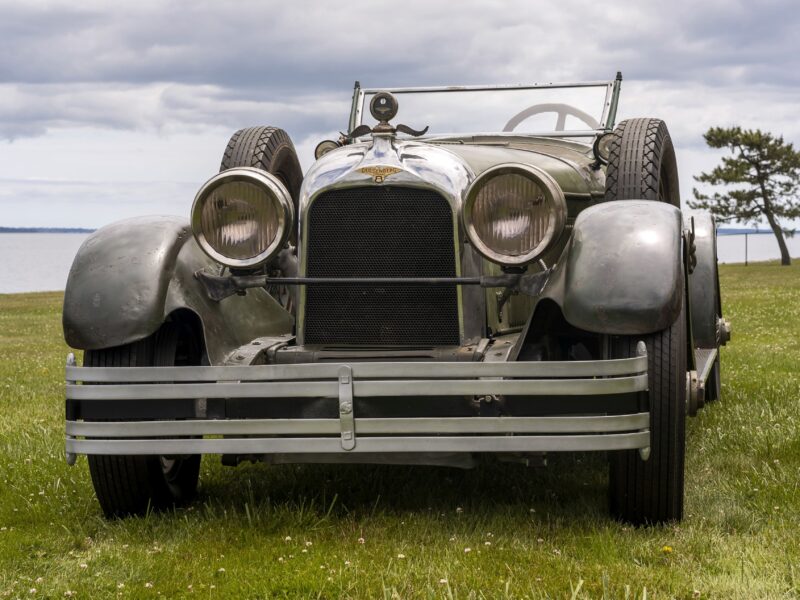
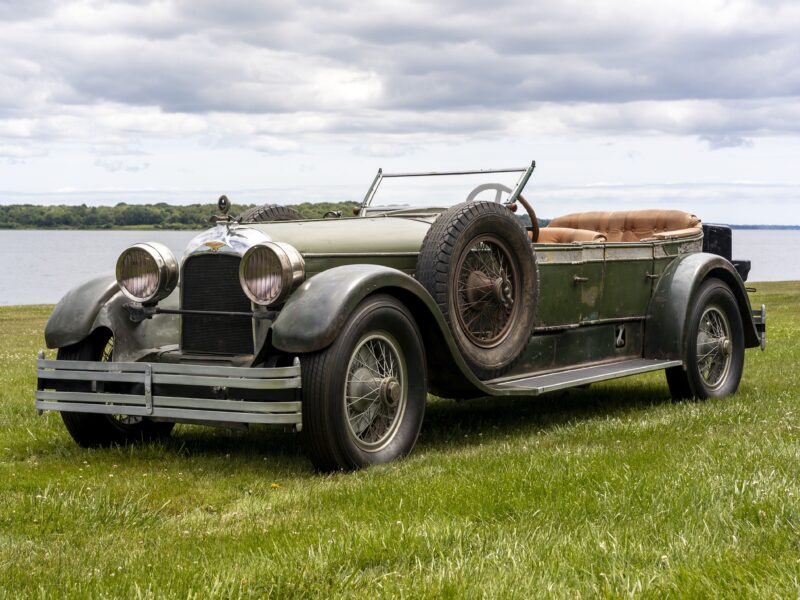
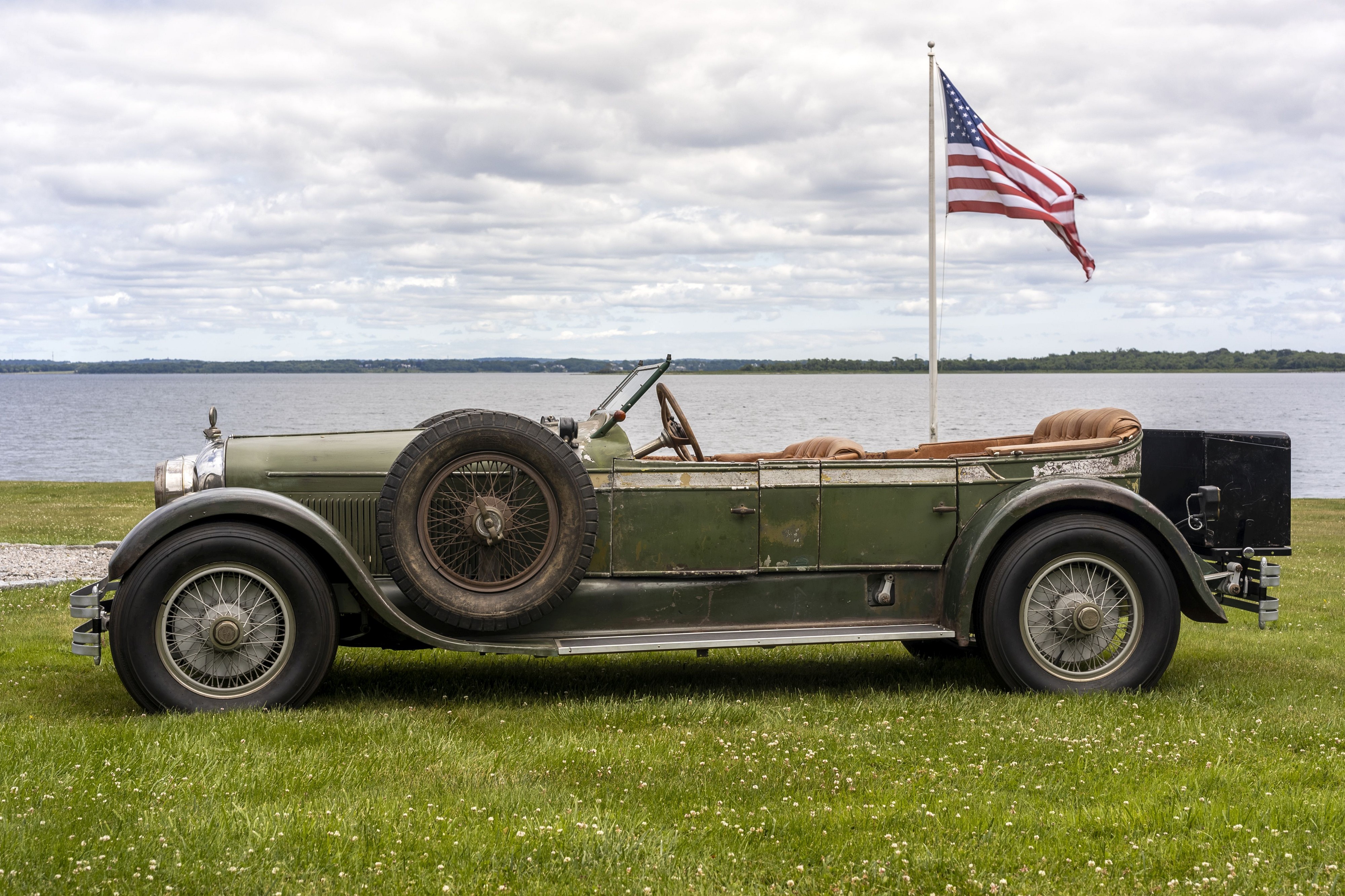
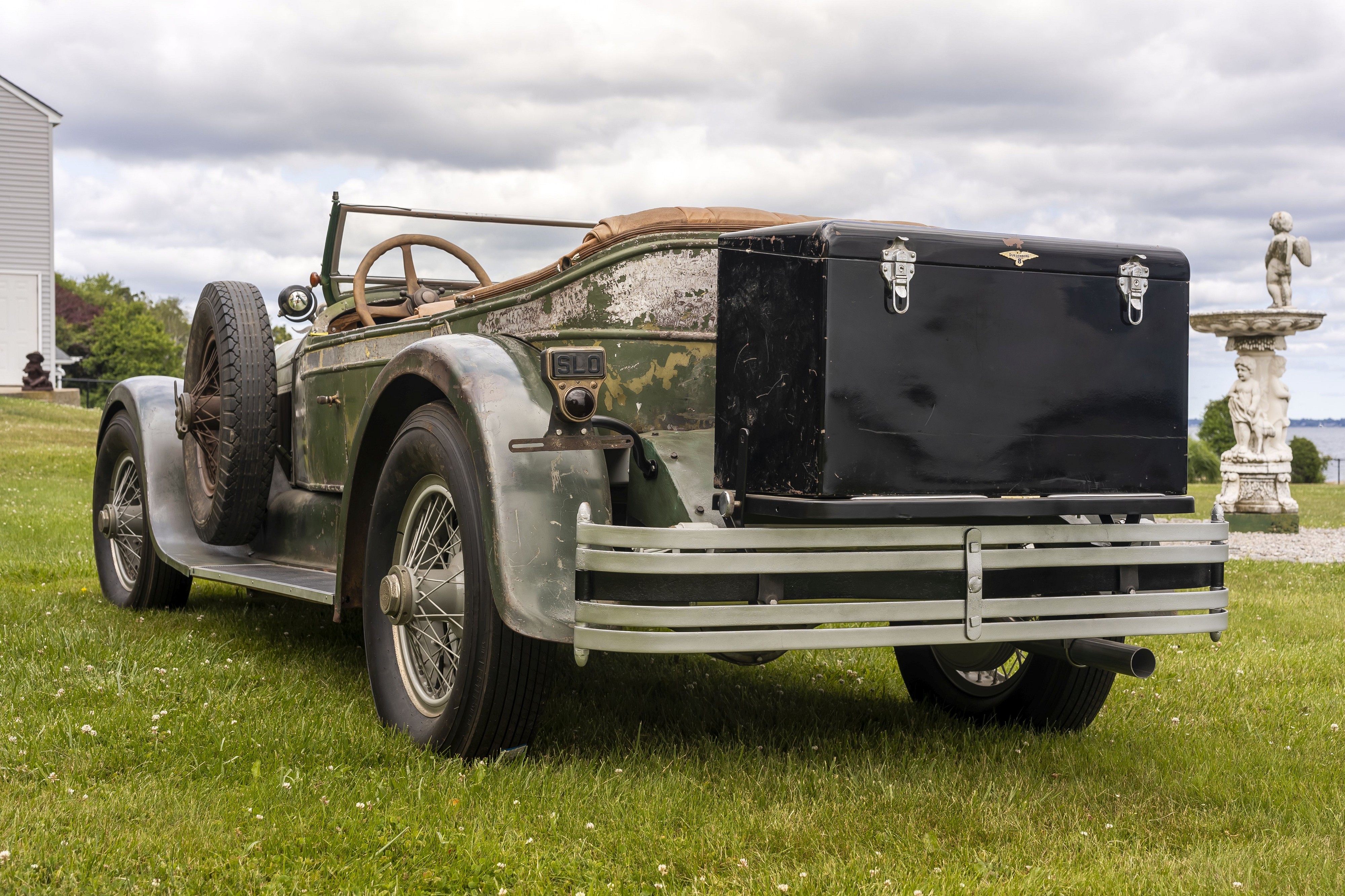
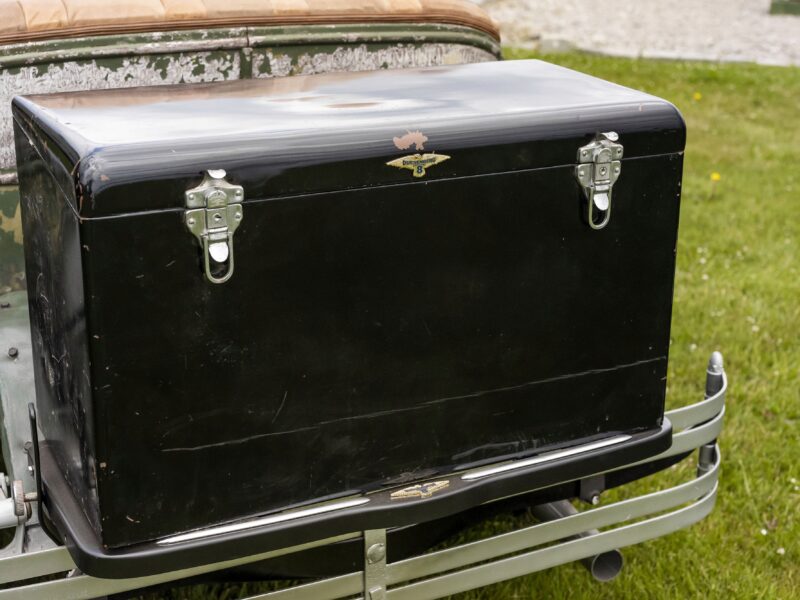
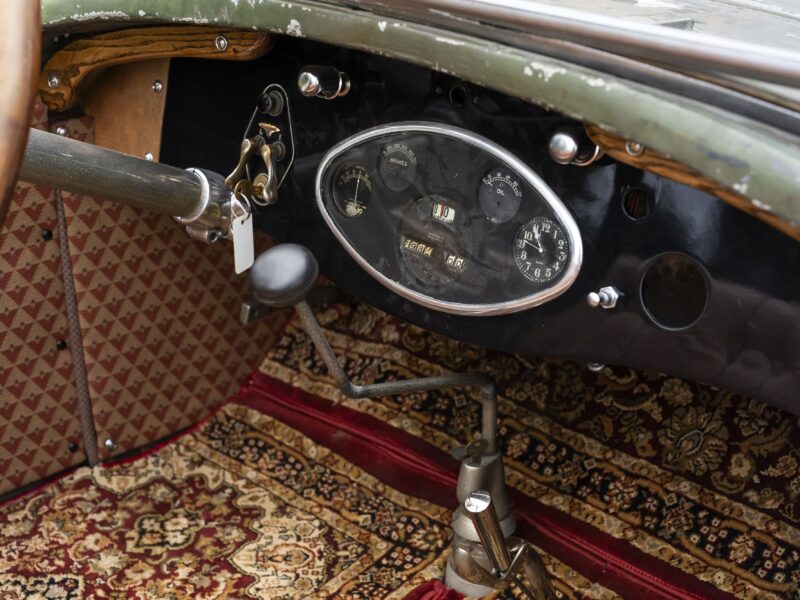
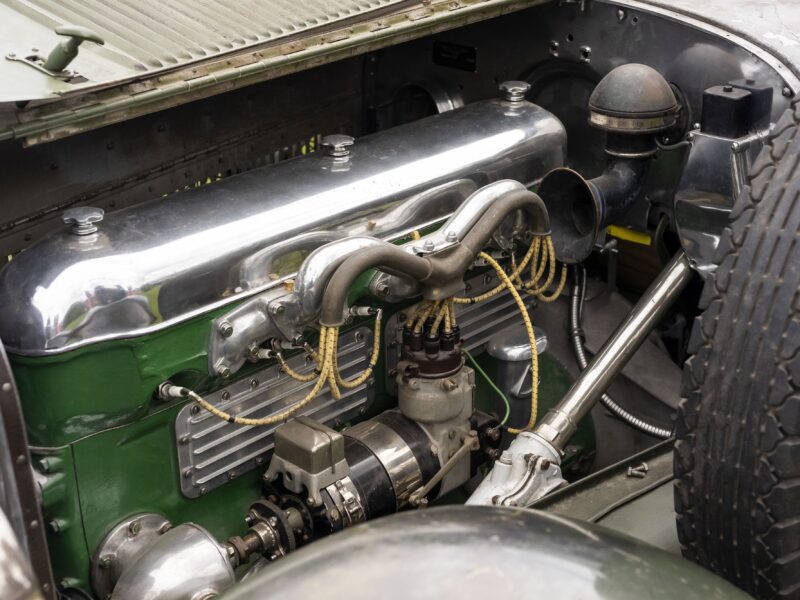
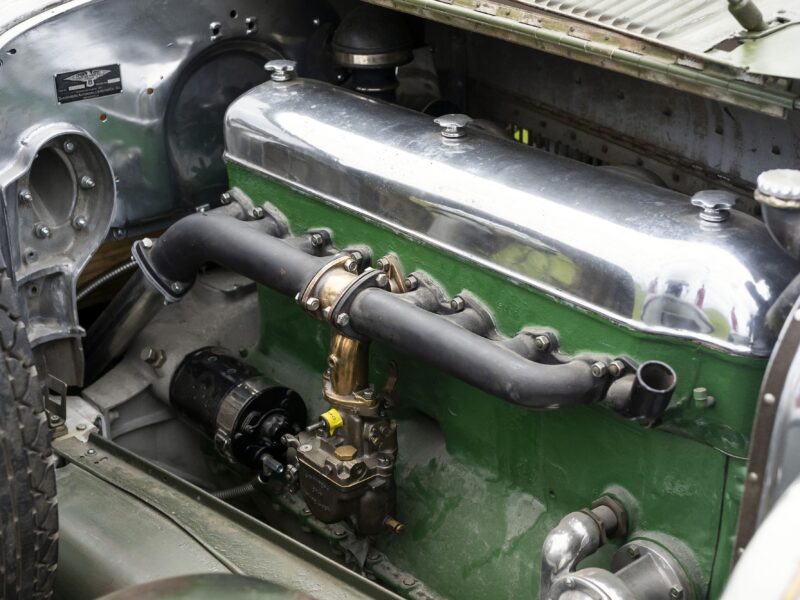
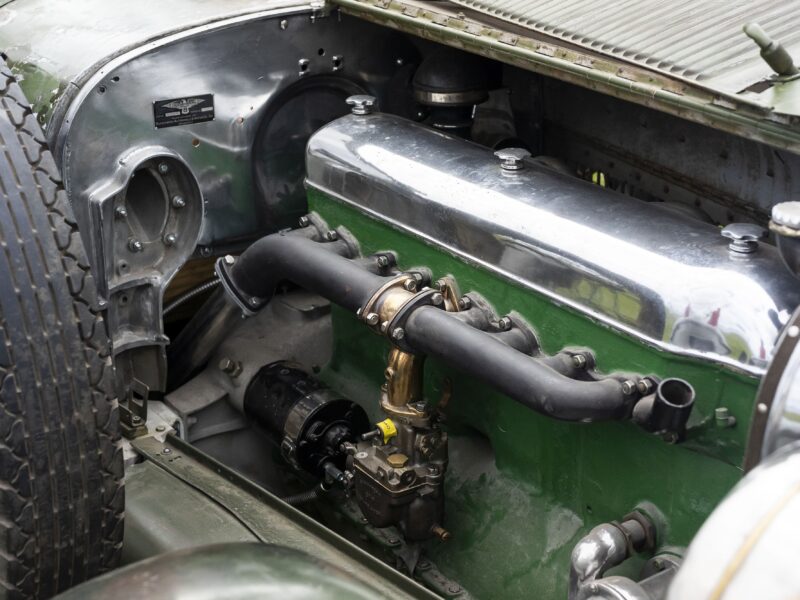
The historic significance of this car is illustrated in an article titled, “The Absolute Final Factory-Produced Model-A Duesenberg” by Dr. John Baeke Auburn Cord Duesenberg historian. It is not only the last one that was produced, Dr. Baeke has also uncovered a 1926 photo that he believes shows Mrs. Duesenberg sitting in the driver’s seat of this car in front of her residence.
The Absolute Final Factory-Produced Model-A Duesenberg
by Dr. John Baeke, Auburn Cord Duesenberg historian
The boutique motorcar companies of Fred & Augie Duesenberg and Enzo Ferrari
(America and Italy respectively) enjoyed great success and had much in common. Both
excelled in the emerging technologies of overhead cams and forced induction
(supercharging & turbocharging). While their performance creds appealed to the
sportsmen, their designer custom coachwork attracted those desiring only the latest
haute couture.
#3062 1926 Duesenberg Model A Touring
On the racetrack, both auto makers dominated the competition. One thing which
separated these two marques from all other manufacturers was the old mantra, “Win on
Sunday, Sell on Monday” meaning We race to sell… simply did NOT apply. At
Duesenberg and Ferrari, it was the exact opposite. They were not bashful in admitting
they manufactured passenger cars purely to support their racing programs. While at
Ford and the others, they only raced to support their auto manufacturing.
2
At Duesenberg dealerships, customers knew the very same (albeit detuned) overhead
cam 8-cylinder engines the company ran at Indy were powering their Model-A
passenger cars. At Ferrari, the same 12-cylinder 250GT power plant they won at Le
Mans, powered their touring cars.
For Duesenberg, all of this took a dramatic change in 1926, when magnate E. L. Cord
added Duesenberg Motor Cars to his portfolio. Cord’s vision was to separate
Duesenberg racing from the passenger car operation. Things changed overnight with
cessation of production of the racy Model-A and development of what would become
the mighty (just not racy) Model-J. As sophisticated as the Model-J motor was, its
ghastly weight left no pretentions of future racetrack success.
Thus, the Model-A Duesenberg (produced from 1921-26) marked the end of an era
when an average American (granted one with some wealth) could drive a truly racebred passenger car.
Vehicle ID #3062 in the Shappy collection is truly special. According to the preeminent
authority Fred Roe, first ACD Club Duesenberg Historian (ref. Duesenberg. The Pursuit
of Perfection, F. Roe. Apdx-1, pg 277), it represents the absolute final factory-produced
Model-A Duesenberg.
3
Serial numbering affirming this the final Model-A Duesenberg.
4
Original frame stamping serial number 1202.
Car no. 1202/1594 was produced in 1926 at the Duesenberg factory in Indianapolis,
Indiana. As was common for nearly all upper-crust motorcars of the 1920s, its body
was designed and built by one of the custom coachbuilders of the day. In those days,
Duesenberg was especially fond of Millspaugh & Irish, Rubay, Fleetwood, Locke, and
Springfield. Though time has concealed this coachbuilder’s identity, certainly 1202 has
the common hallmarks of the others.
As the taste of the Roaring ‘20s elite became more sophisticated, coachbuilders began
trimming and lowering the formerly boxy sedan and phaeton bodies and then dressed
them up in colorful two-tones. This trend certainly is apparent with 1202 where its
Touring (some might call it a Phaeton) body has been designed with a lower more racy
profile. This snazzy design was popular with many, not the least of which was Mrs.
Fred Duesenberg.
Poor copy from Fred Roe collection. Mrs. Fred Duesenberg in front of Indianapolis home.
Same or similar car to 1202.
5
In a photo dated 1926 and provided by Historian Roe, Mrs. Duesenberg (posing in front
of her home) can be seen behind the wheel of either this very car (quite likely) or an
identical car. More photographic research should confirm whether 1202 is her car. The
sleek profile of 1202 was further accentuated by two tones of green with a yellow belt
and the stylist’s clever use of double front and rear bumpers.
6
Poor copy from Fred Roe collection. Mrs. Fred Duesenberg in front of Indianapolis home.
Same or similar car to 1202.
As of 2023, the ownership provenance of Duesenberg 1202 has been documented back
73+ years. In 1950 Robert H. Kines, Jr. (Milledgeville, GA) purchased the Duesenberg.
In 1954, he sold it to Floyd W. McCall (Charlotte, NC) in running condition for $25.
Circa 1980, it was acquired by vintage car collector Royce Kershaw, Sr. (Montgomery,
AL) and later inherited by his son Royce, Jr. (Montgomery, AL). In 2021, Duesenberg
aficionado, Richard Shappy (Providence, RI) obtained the car and immediately began a
meticulous preservation class restoration. She still is clothed in her original paint.
7
Circa 1940s or 1950s. The last Model-A Duesenberg serial number 1202.
The car has remained completely original and numbers matching; retaining its original
chassis (s.n. 1202), motor (s.n. 1594), transmission, and body. This historic motorcar
was 99% complete when acquired by Dick. His expert team has gone to great lengths
to preserve this car’s history, even locating vintage patinaed leather upholstery.
While today, 73 percent of all Model-J Duesenbergs survive, amazingly only about 6
percent of Model-A Duesenbergs survive. For this, the absolute final race-bred model-A
Duesenberg ever built, with such unique and stunning coachwork to still exist is
remarkable. Each of its prior owners appreciated the car for its beauty and originality
while being seemingly unaware of its historical significance.
Thank you Dick Shappy for
rescuing and preserving this treasure.
All right owned by Master Kold LLC By Themespride